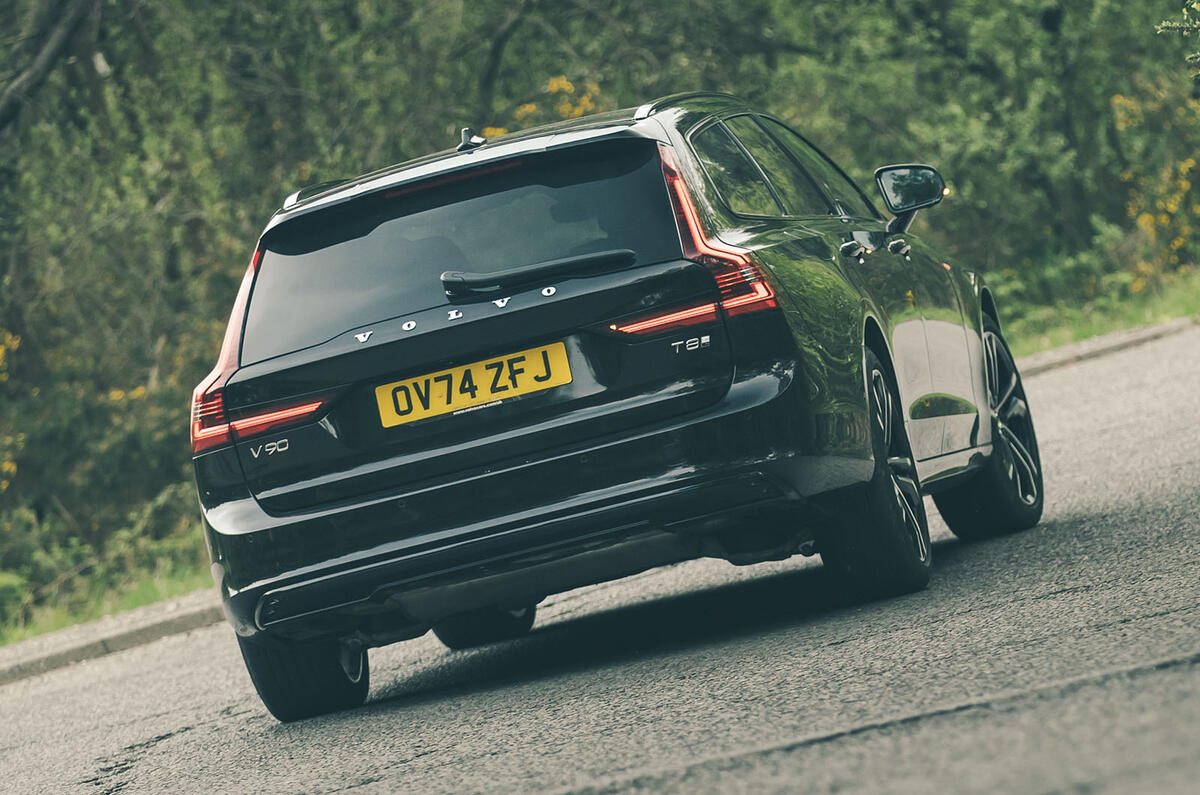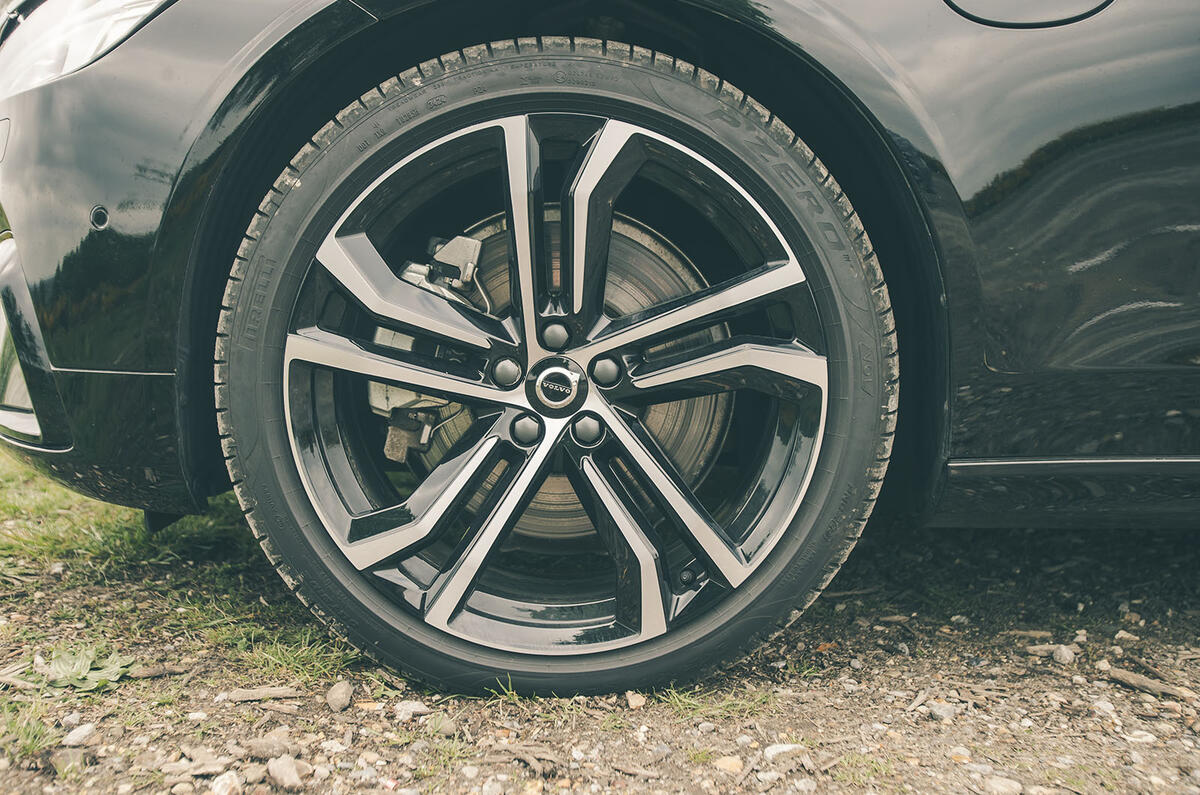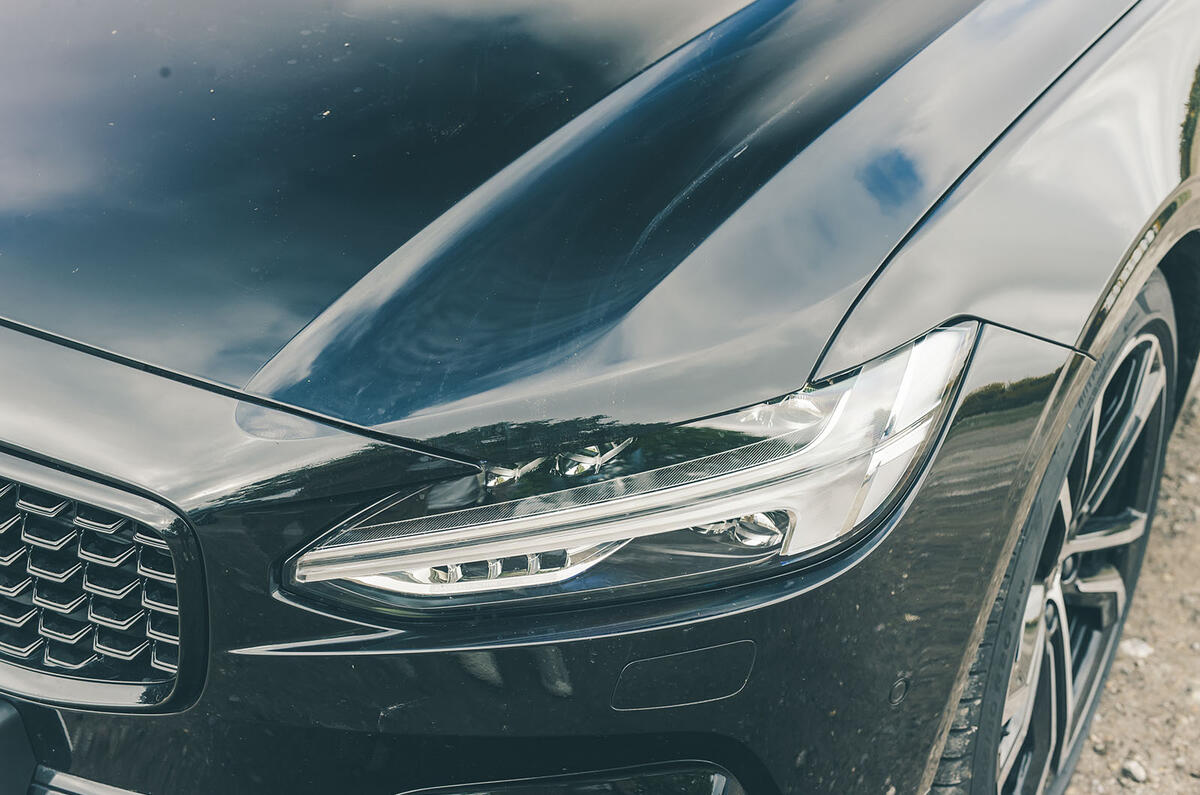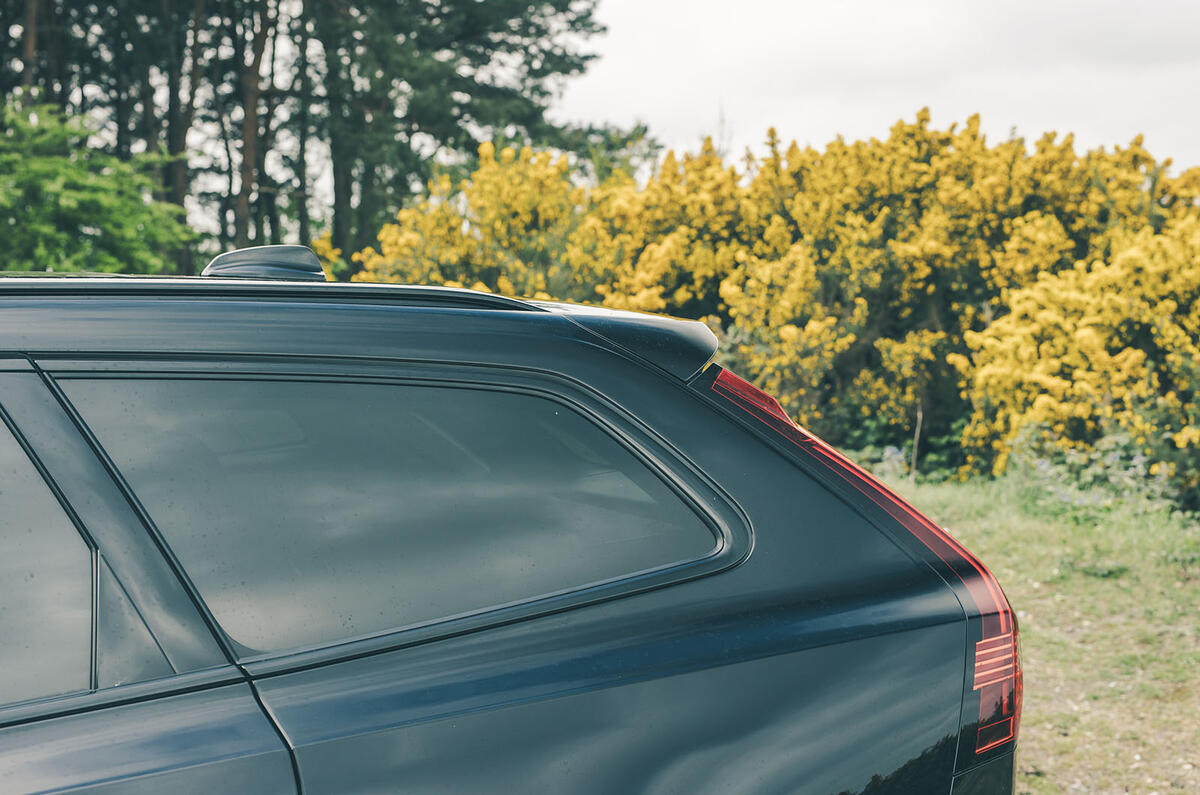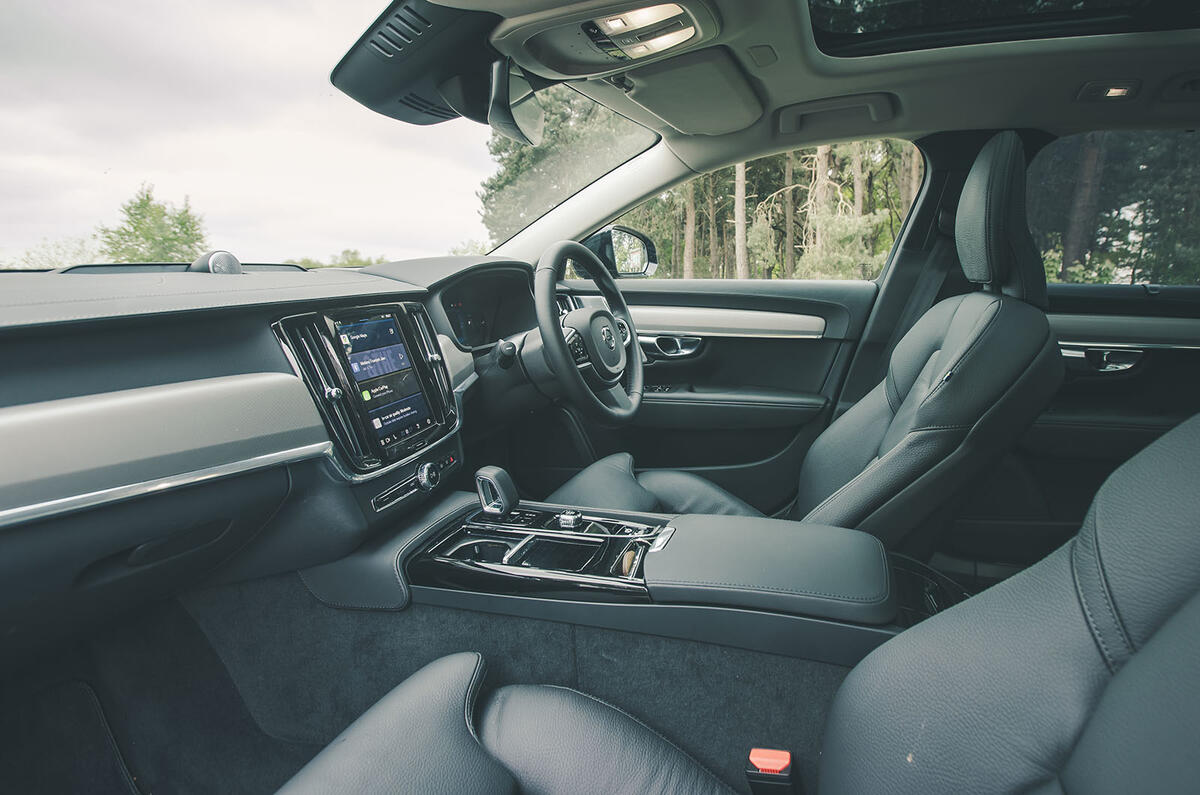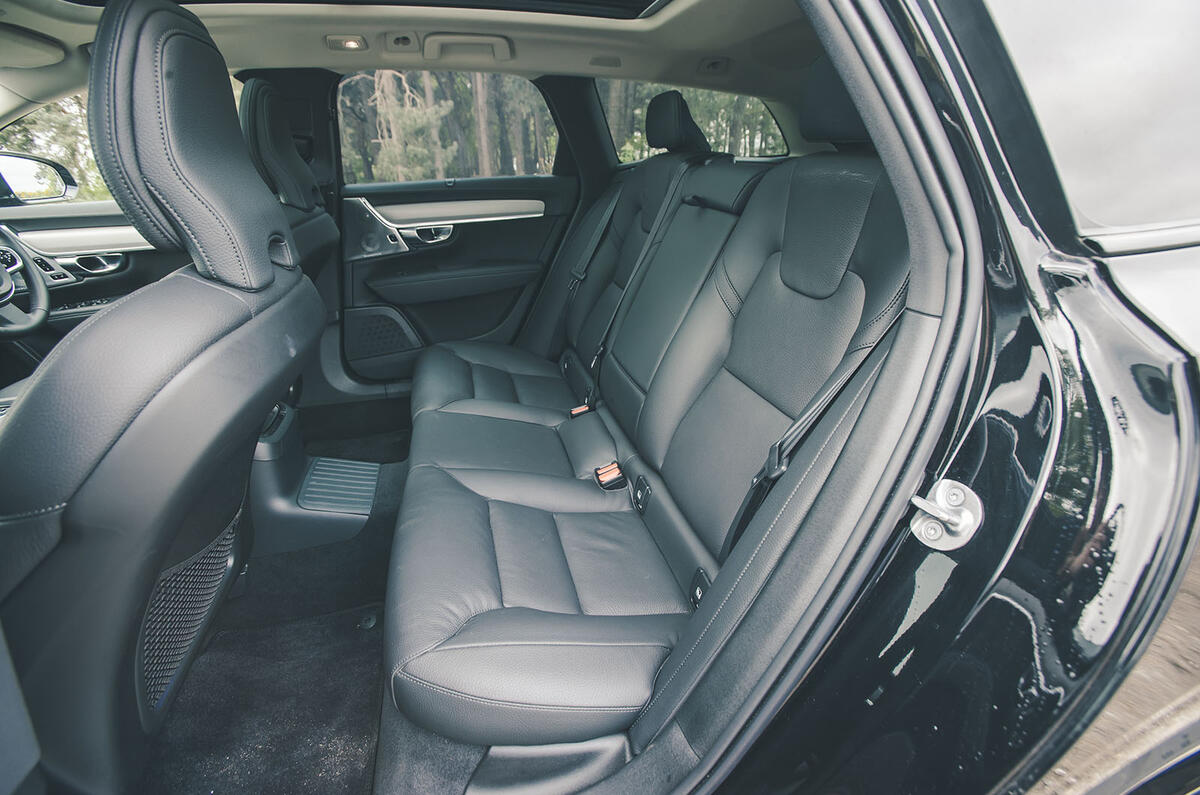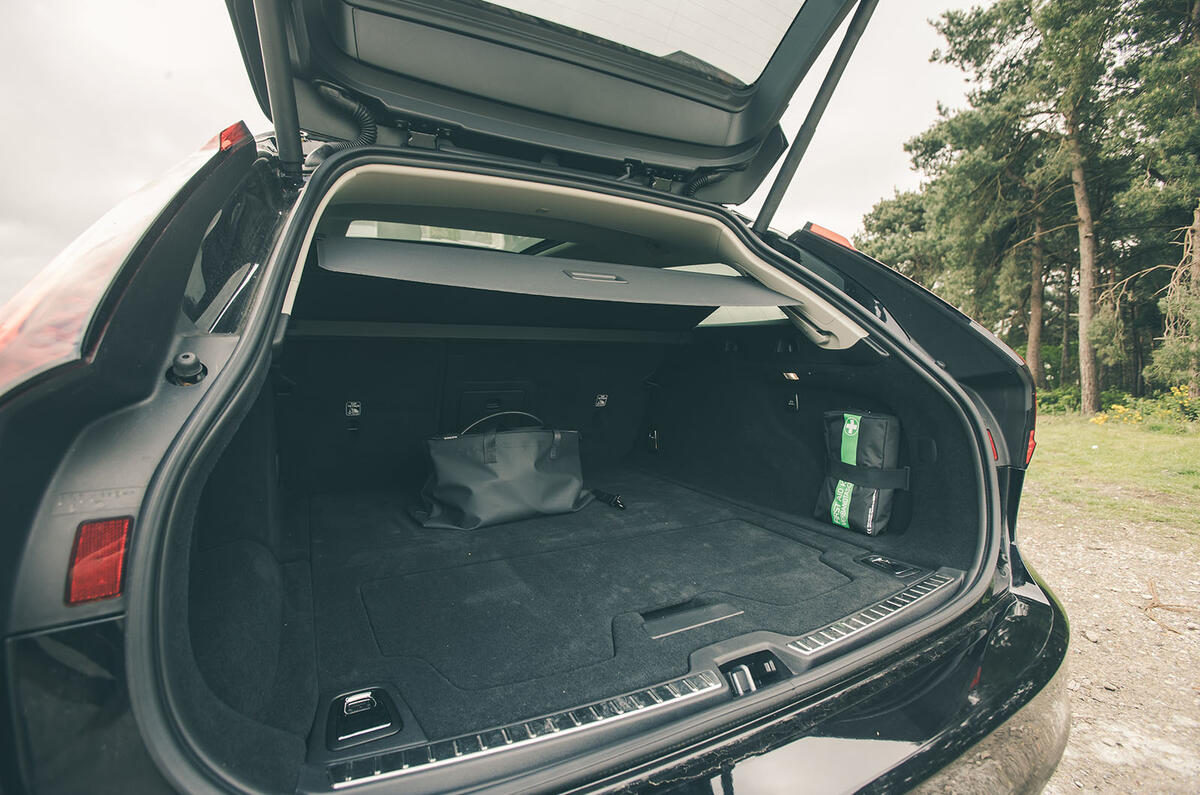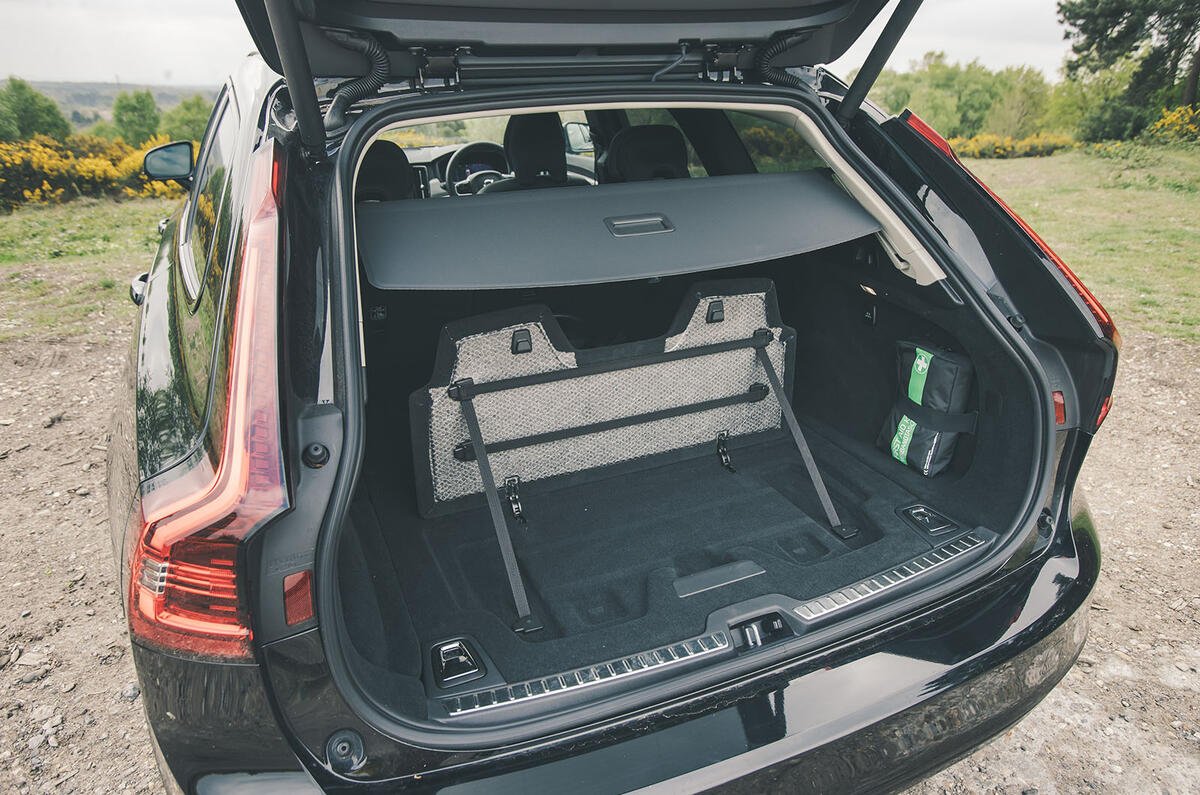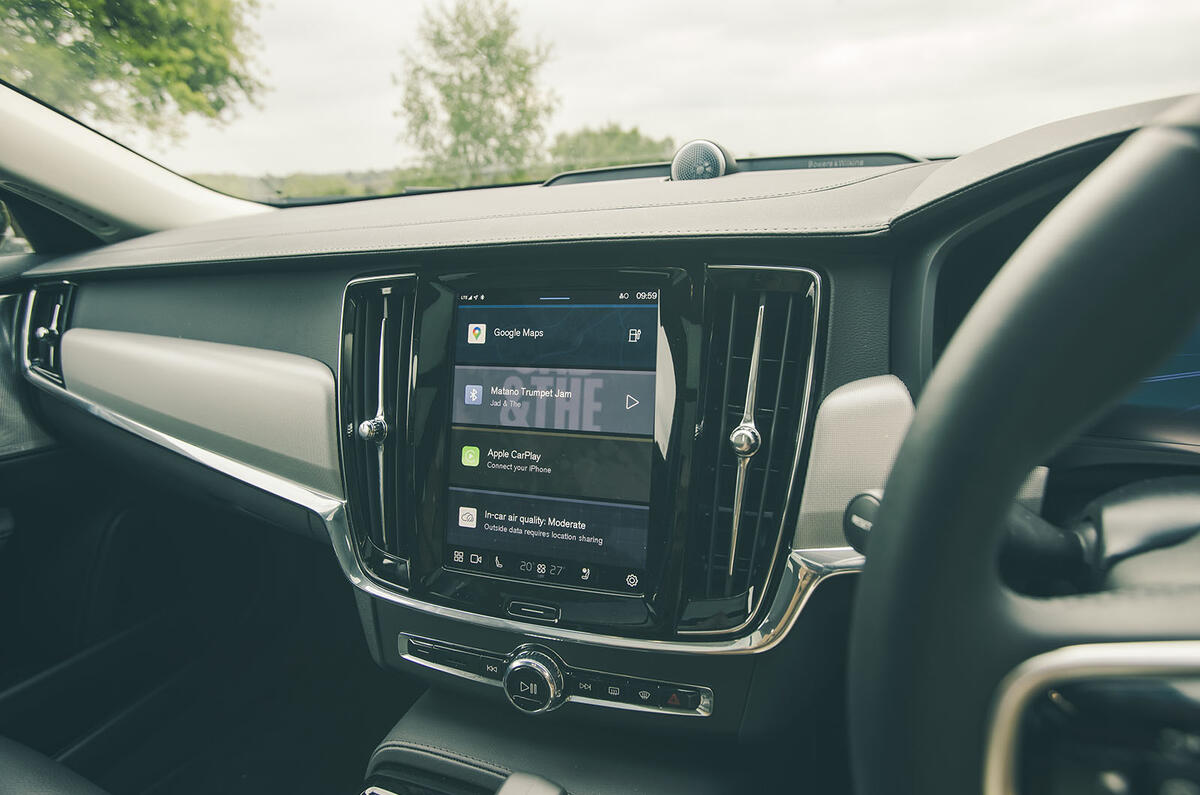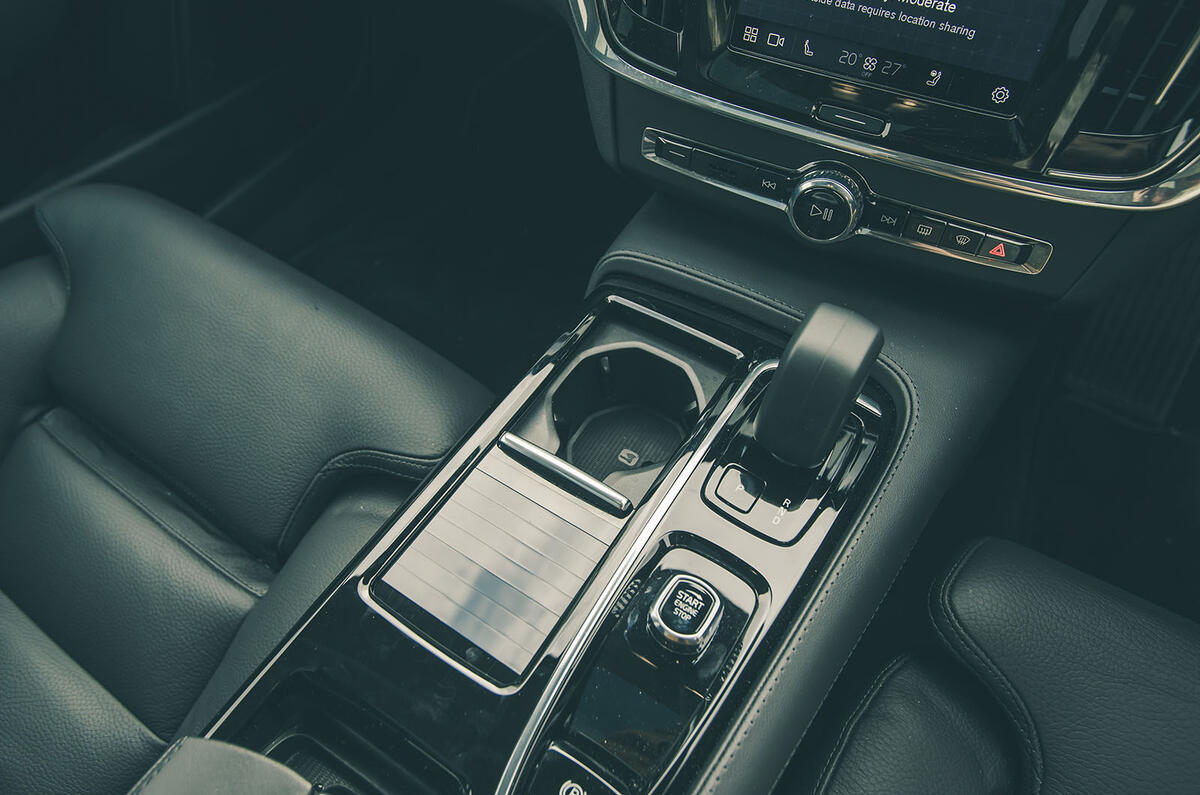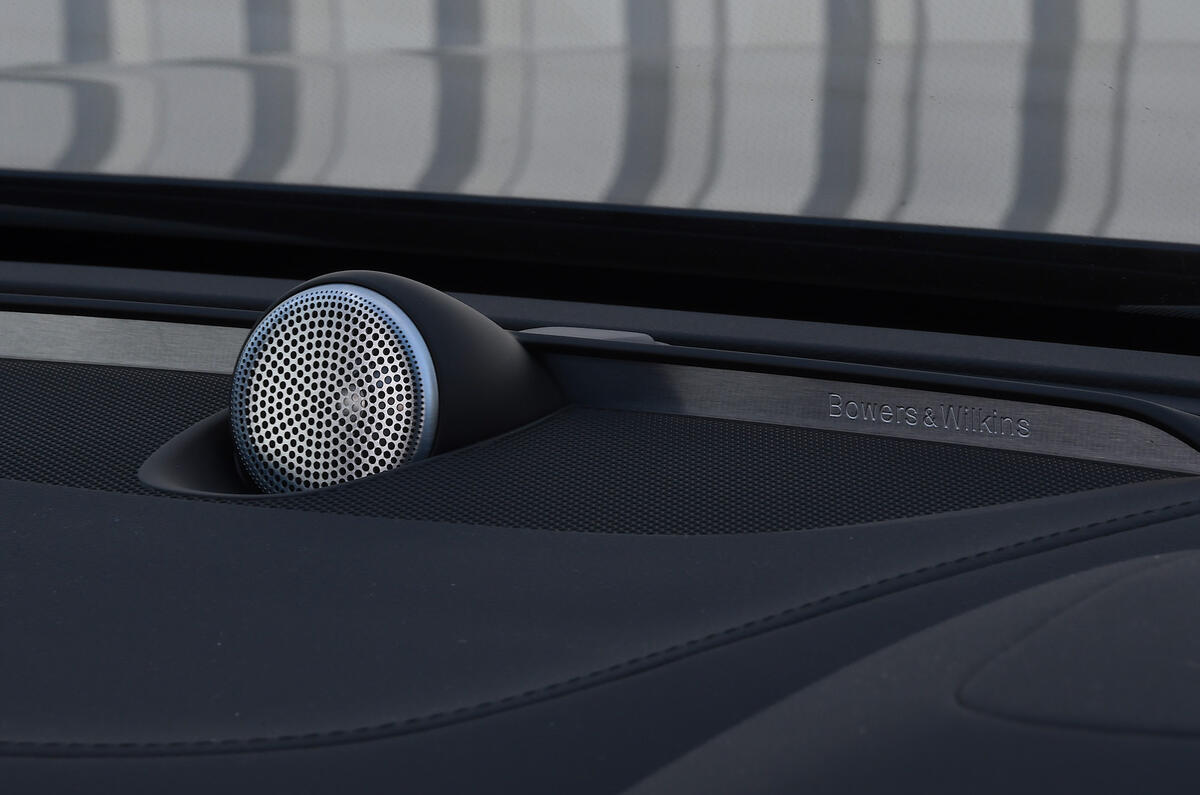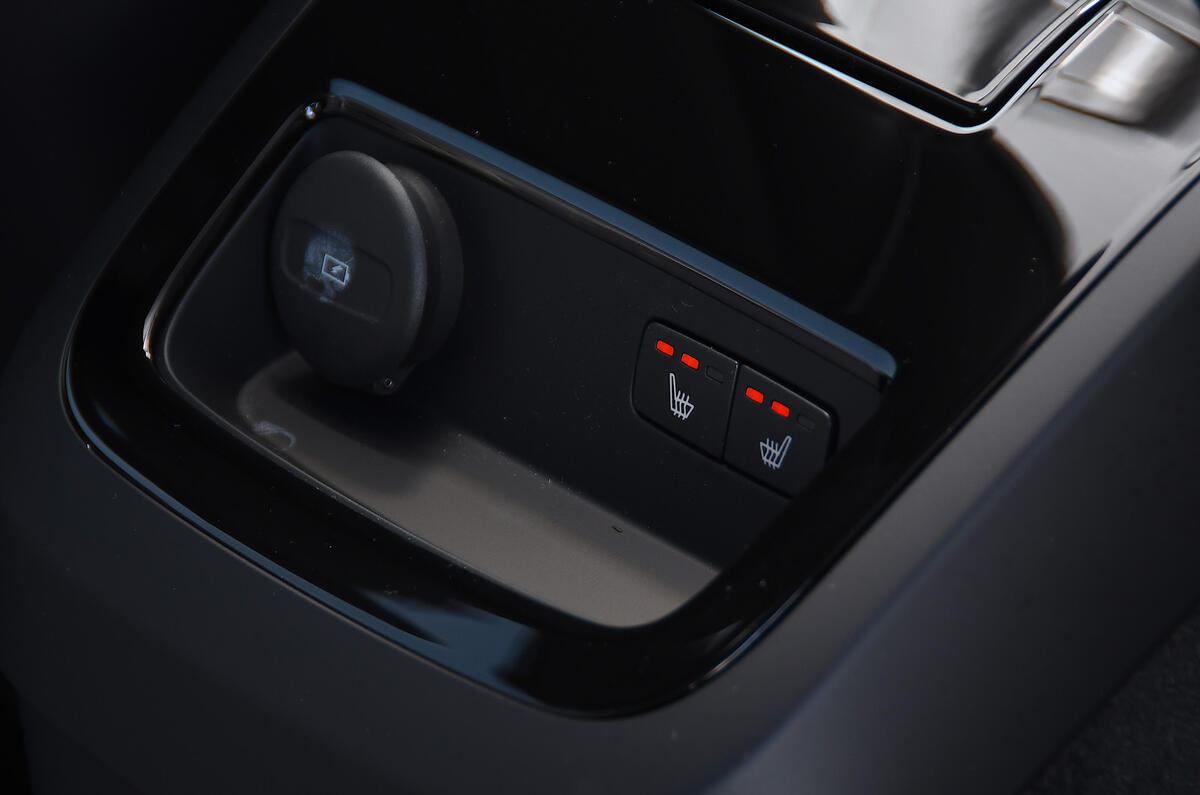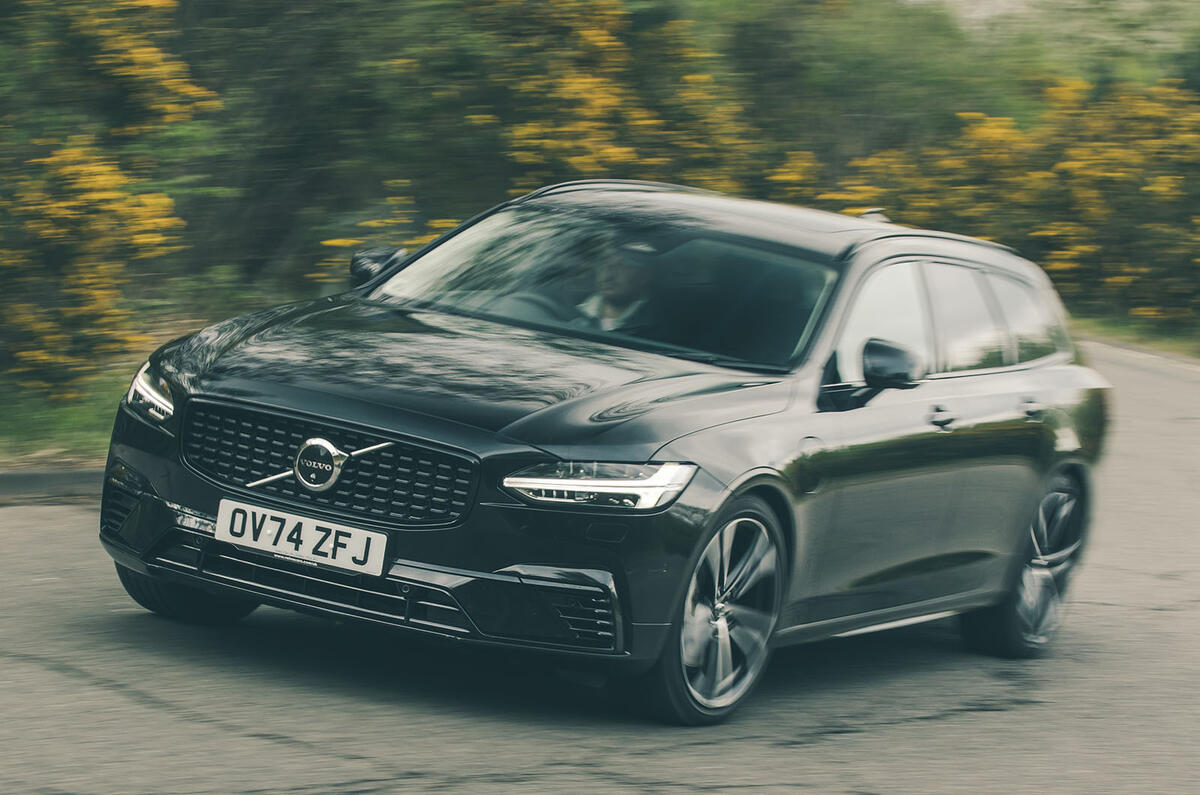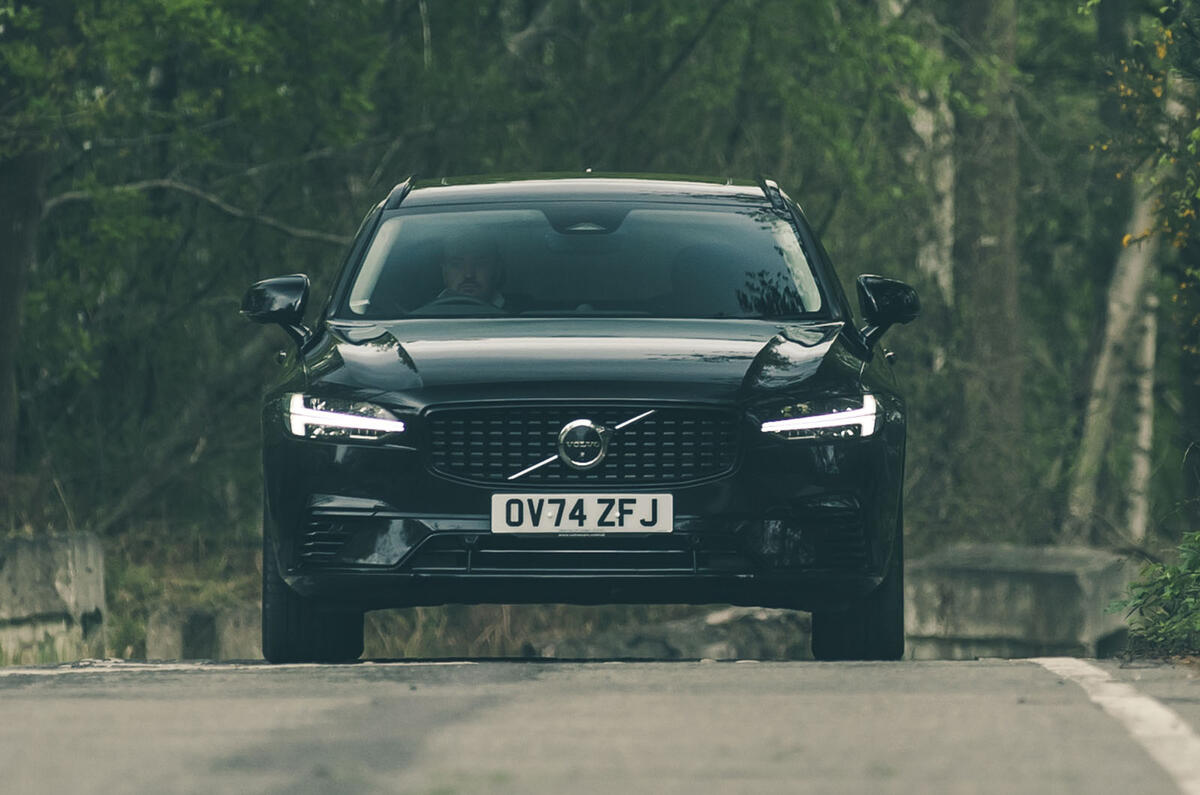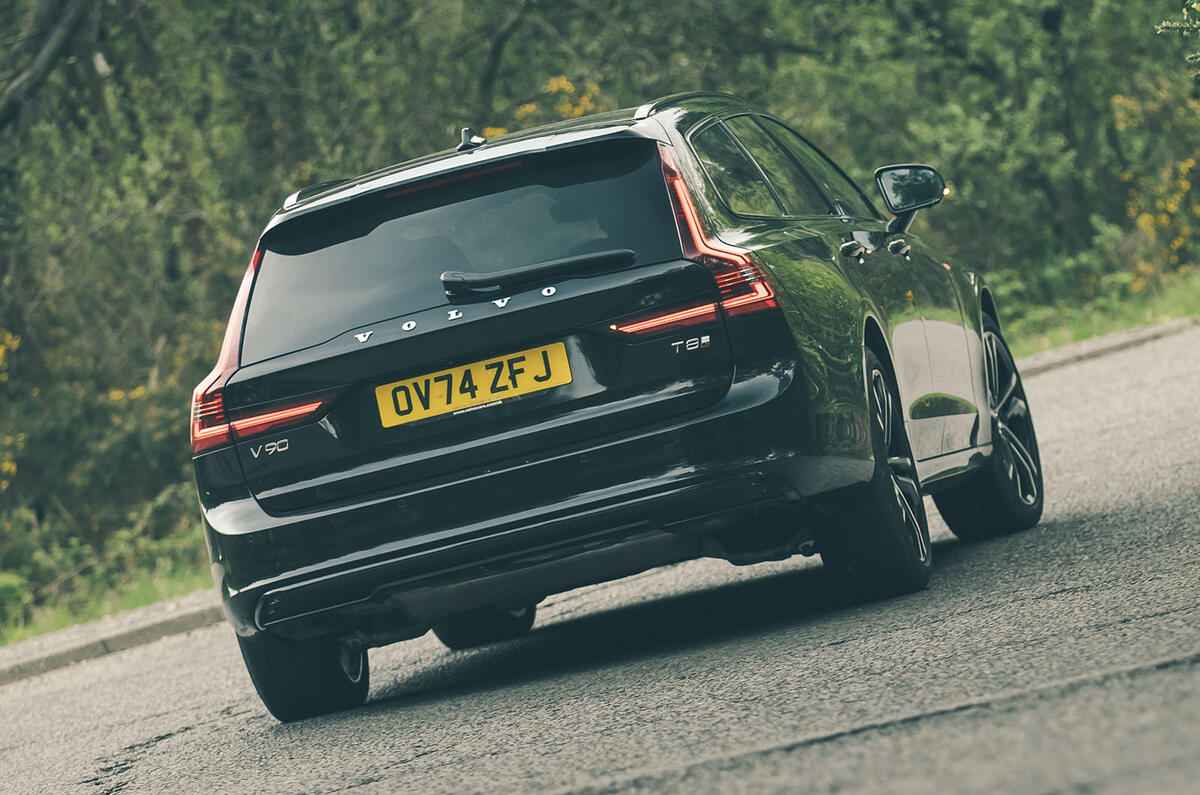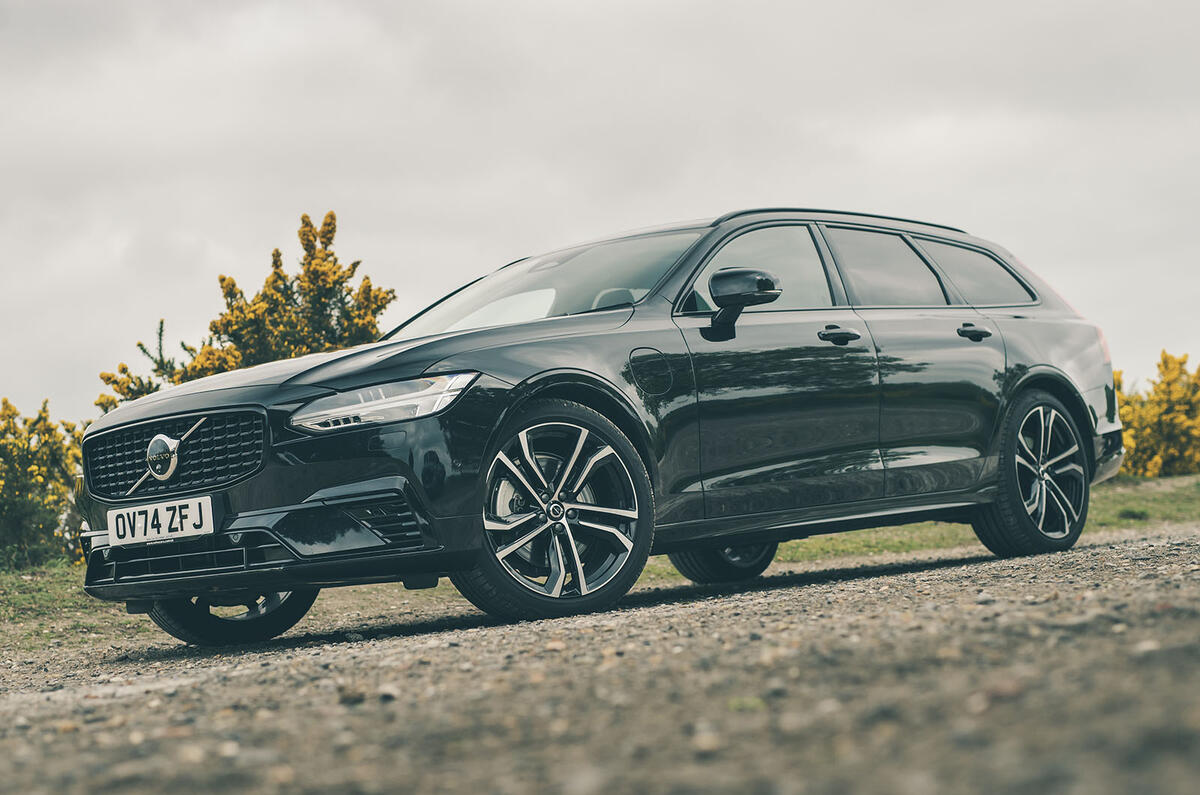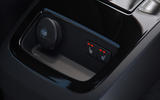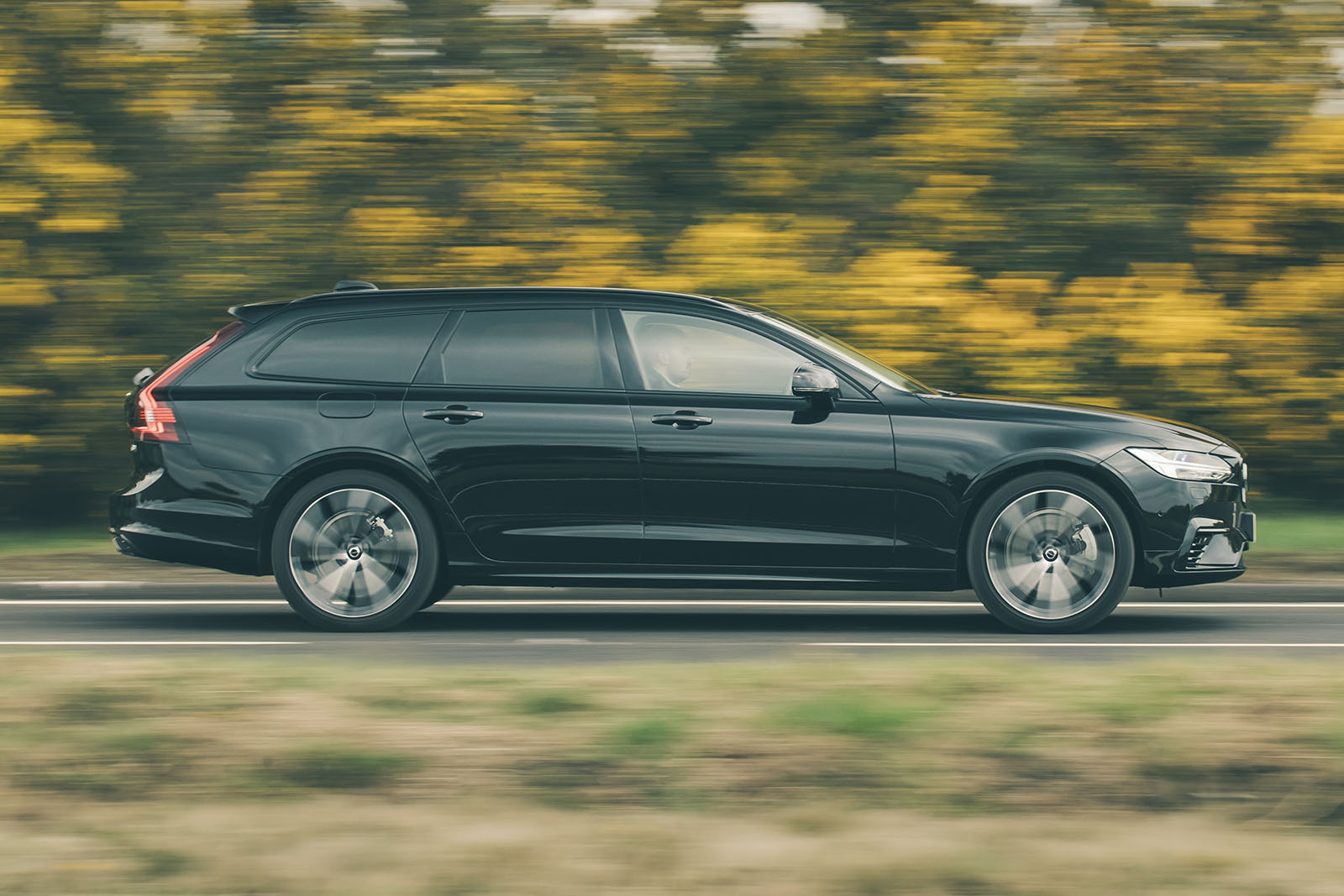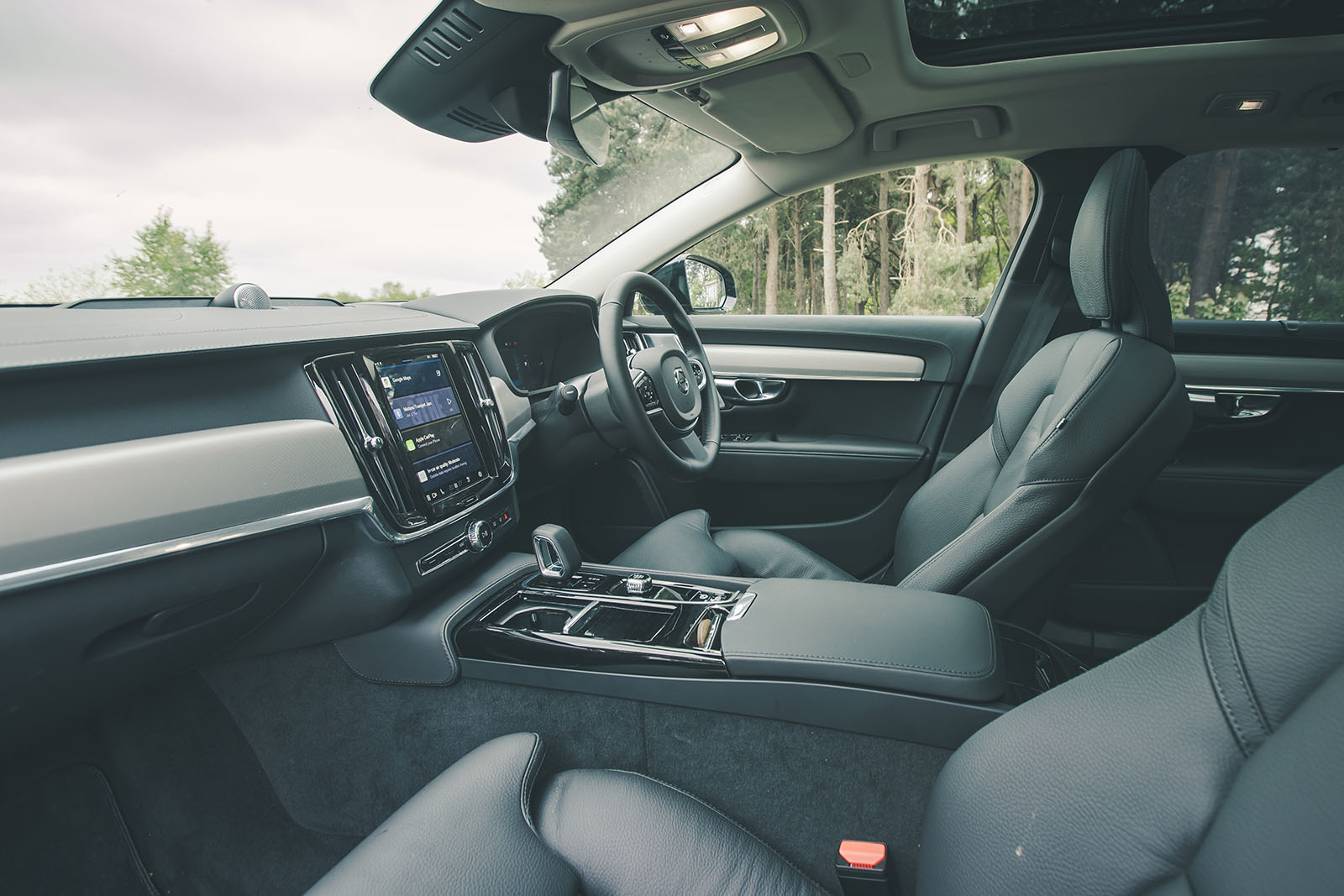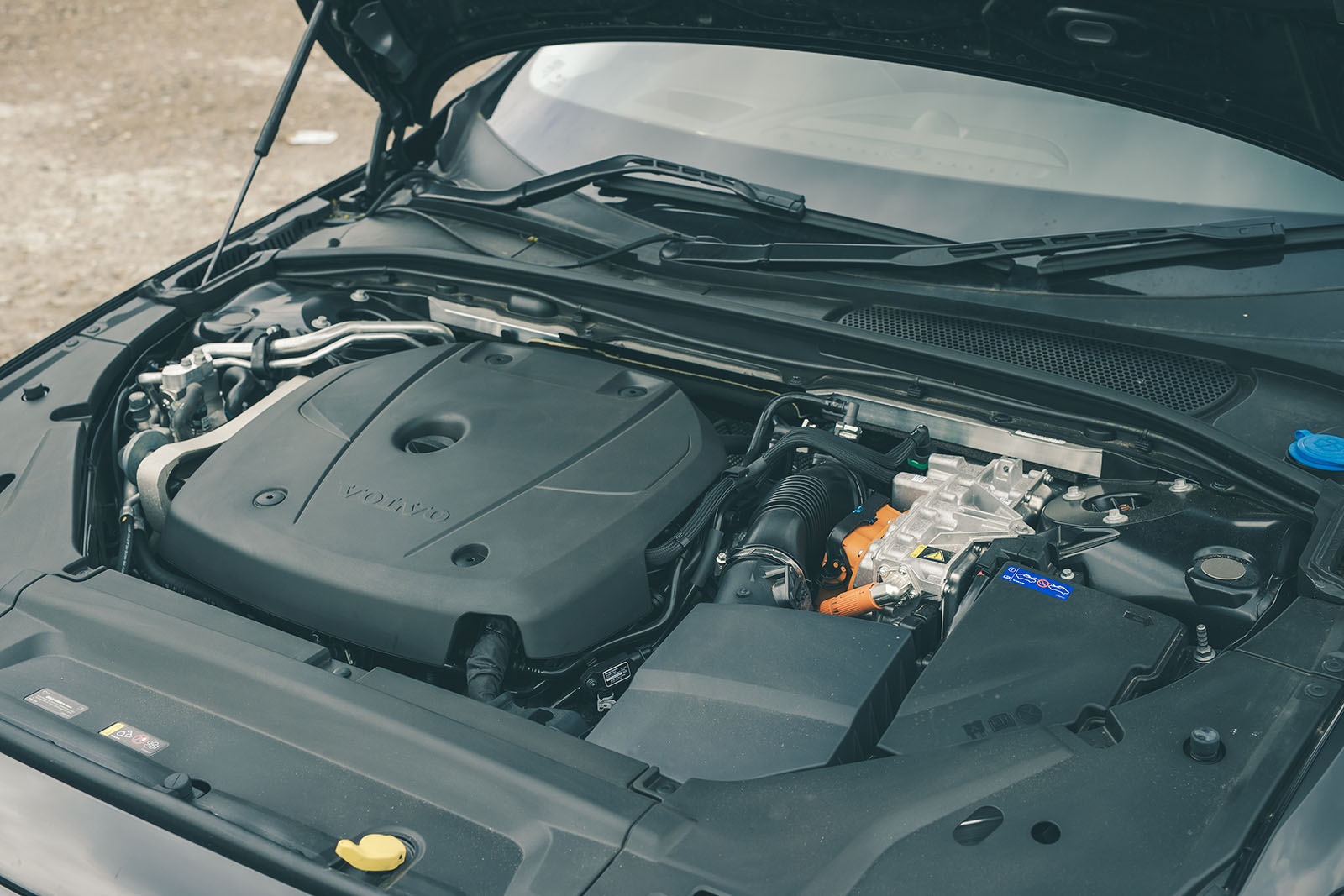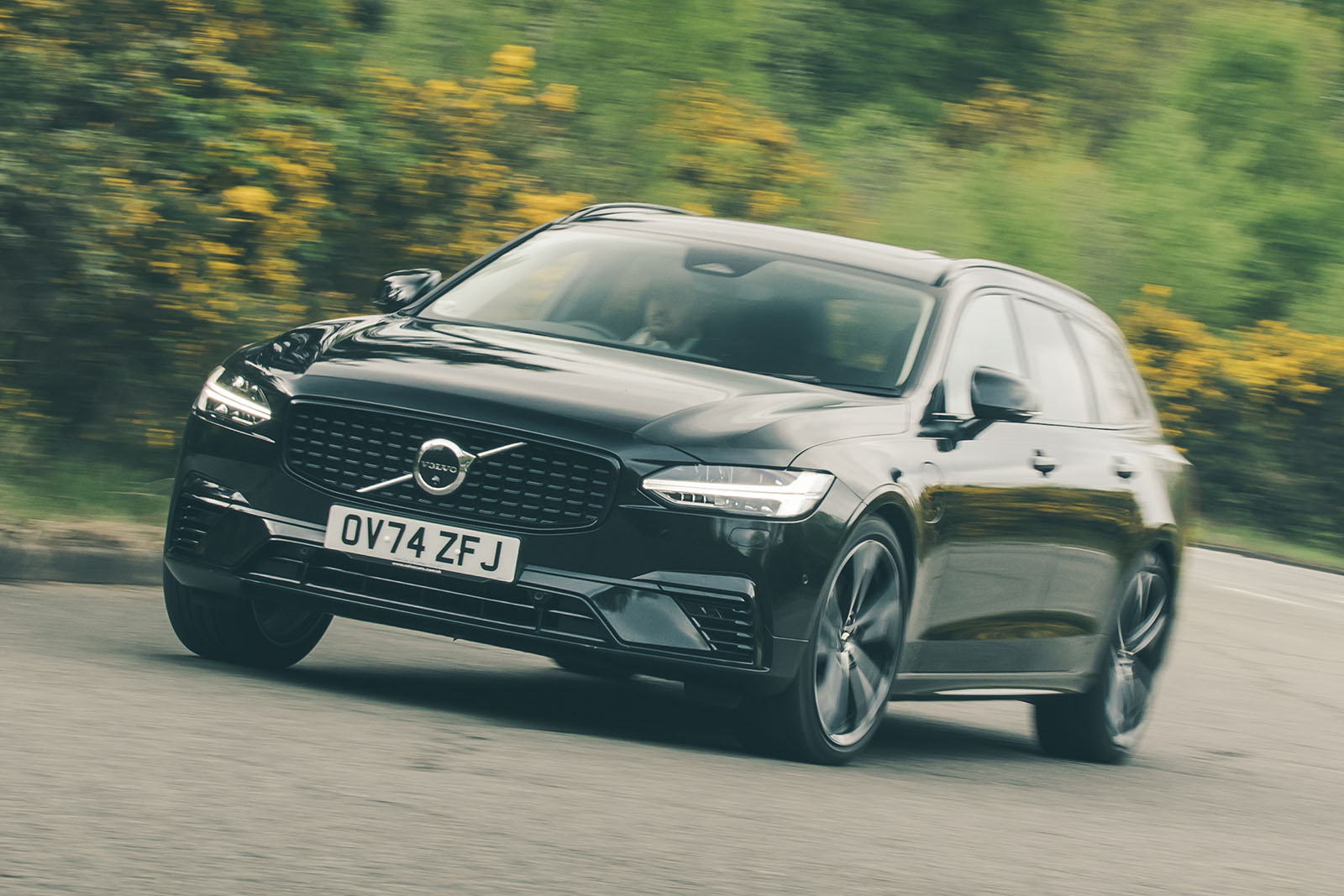Since space is the primary objective for anyone looking to buy this type of car, let's deal with that first. Boot space with all five seats in place is still above average for the class at 551 litres; this is 91 litres more than the equivalent E300e Estate but 21 litres down on the 530e or 550e Touring. With the seats folded down, space increases to a less competitive 904 litres.
There are plenty of practical touches back there, though. You get a divider that rises up out of the boot floor to stop shopping or luggage rolling around, there's a portable dog net that can fit under the false floor when you don't need it and you're unlikely to want more 12V sockets. It's a shame there isn't more under-floor storage, but the rear-mounted electric motor eats into space.
Where the V90's technology doesn't eat into space is in the rear seats. There's almost a limousine-like amount of leg room back there and head room is plentiful, even with a panoramic roof that in other cars can rob space; taller passengers will be fine on long journeys. The rear seats themselves have good under-thigh support, although lateral support is lacking somewhat.
The same goes for the front seats, which are electric as standard and offer a vast number of configurations to the base, backrest and thigh extensions. They're comfortable enough to cover any distance and the leather they're upholstered in smells and feels like it's of a high quality.
Elsewhere, perceived quality is just as impressive. Volvo’s cool minimalist design and simplified approach to layout are instantly recognisable, while a choice selection of aluminium, rubberised and gloss-black plastic surface treatments allow the V90 to mix comfortably with Mercedes, Audis and BMWs. Volvo wants you to think of this car as a premium offering and, as far as the fit, finish and material palette of the V90’s cabin are concerned, that’s precisely what it is.
Things slightly begin to fall down as soon as you focus on its 9.0in, portrait-oriented touchscreen infotainment system. Many secondary functions such as the climate control and heated seat controls are operated via the screen. This would be acceptable if the icons representing them were big enough, but since this screen was developed before buttons were deemed replaceable, their integration feels like an afterthought. They're so small and difficult to hit that you spend too much time with your eyes off the road trying to get them to work.
This is especially irritating, because there are blank buttons at the foot of the screen (even on our top-spec test car) that could have taken some functions away from the screen. What's more, the knurled drive mode switch has been ditched and in its place is a rather shallow and useless empty space. Thankfully, there are at least some physical knobs and buttons for the entertainment system.
While we're grumbling, our car's Bluetooth connection didn't prove to be especially reliable, often needing a prompt to reconnect rather than doing it automatically. And each time you electrically adjust the seat, an unnecessary pop-up appears on the infotainment screen telling you what you just did - irritating if you need to use the sat-nav.




